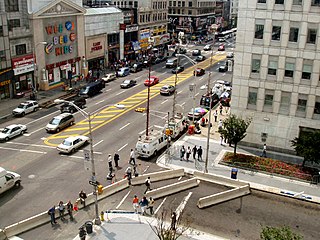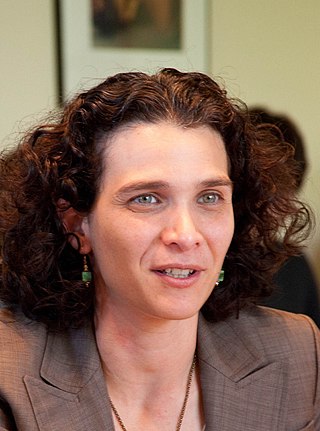Journalism is the production and distribution of reports on the interaction of events, facts, ideas, and people that are the "news of the day" and that informs society to at least some degree of accuracy. The word, a noun, applies to the occupation, the methods of gathering information, and the organizing literary styles.

The news media or news industry are forms of mass media that focus on delivering news to the general public. These include news agencies, newspapers, news magazines, news channels etc.

In journalism and mass media, sensationalism is a type of editorial tactic. Events and topics in news stories are selected and worded to excite the greatest number of readers and viewers. This style of news reporting encourages biased or emotionally loaded impressions of events rather than neutrality, and may cause a manipulation to the truth of a story. Sensationalism may rely on reports about generally insignificant matters and portray them as a major influence on society, or biased presentations of newsworthy topics, in a trivial, or tabloid manner, contrary to general assumptions of professional journalistic standards.
News values are "criteria that influence the selection and presentation of events as published news." These values help explain what makes something "newsworthy."
Journalistic ethics and standards comprise principles of ethics and good practice applicable to journalists. This subset of media ethics is known as journalism's professional "code of ethics" and the "canons of journalism". The basic codes and canons commonly appear in statements by professional journalism associations and individual print, broadcast, and online news organizations.
Mass communication is the process of imparting and exchanging information through mass media to large population segments. It utilizes various forms of media as technology has made the dissemination of information more efficient. Primary examples of platforms utilized and examined include journalism and advertising. Mass communication, unlike interpersonal communication and organizational communication, focuses on particular resources transmitting information to numerous receivers. The study of mass communication is chiefly concerned with how the content and information that is being mass communicated persuades or affects the behavior, attitude, opinion, or emotion of people receiving the information.
In media studies, mass communication, media psychology, communication theory, and sociology, media influence and themedia effect are topics relating to mass media and media culture's effects on individuals' or audiences' thoughts, attitudes, and behaviors. Through written, televised, or spoken channels, mass media reach large audiences. Mass media's role in shaping modern culture is a central issue for the study of culture.

Science journalism conveys reporting about science to the public. The field typically involves interactions between scientists, journalists and the public.
Earned media is content relating to a person or organization, which is published by a third party without any form of payment to the publisher. It includes articles by media outlets, interviews with the person or representatives of the organization, or bylined editorials in trade press and other publications. It may also include social media sharing, unpaid mentions by podcast hosts and guests, or word-of-mouth marketing.

A gatekeeper is a person who controls access to something, for example via a city gate or bouncer, or more abstractly, controls who is granted access to a category or status. Gatekeepers assess who is "in or out", in the classic words of management scholar Kurt Lewin.

Digital journalism, also known as netizen journalism or online journalism, is a contemporary form of journalism where editorial content is distributed via the Internet, as opposed to publishing via print or broadcast. What constitutes digital journalism is debated by scholars; however, the primary product of journalism, which is news and features on current affairs, is presented solely or in combination as text, audio, video, or some interactive forms like storytelling stories or newsgames, and disseminated through digital media technology.
Interactive journalism is a new type of journalism that allows consumers to directly contribute to the story. Through Web 2.0 technology, reporters can develop a conversation with the audience. The digital age has changed how people collect information. News from print newspapers, once the only source for news, have seen declines in circulation as people get news on the Internet.
Media Relations involves working with media for the purpose of informing the public of an organization's mission, policies and practices in a positive, consistent and credible manner. It can also entail developing symbiotic relationships with media outlets, journalists, bloggers, and influencers to garner publicity for an organization. Typically, this means coordinating directly with the people responsible for producing the news and features in the mass media. The goal of media relations is to maximize positive coverage in the mass media without paying for it directly through advertising.

News is information about current events. This may be provided through many different media: word of mouth, printing, postal systems, broadcasting, electronic communication, or through the testimony of observers and witnesses to events. News is sometimes called "hard news" to differentiate it from soft media.

Pamela J. Shoemaker is a professor of communication and gatekeeping theorist.

Axel Bruns is a German-Australian media scholar. He is a Professor of Communication and Media Studies at QUT Digital Media Research Centre, Queensland University of Technology in Brisbane, Australia, and a Chief Investigator in the ARC Centre of Excellence for Automated Decision-Making and Society.
In mass communication, the Hierarchy of Influences, formally known as the Hierarchical Influences Model, is an organized theoretical framework introduced by Pamela Shoemaker & Stephen D. Reese. It comprises five levels of influence on media content from the macro to micro levels: social systems, social institutions, media organizations, routine practices, and individuals. This framework was introduced in their book Mediating the Message: Theories of Influences on Mass Media Content.

Karine Nahon is an Israeli information scientist in the area of information, technology, and society. She holds a dual position as an associate professor in The Information School at University of Washington and at Reichman University. In July 2017, Nahon was named #24 on Forbes' list of 50 Most Influential Women in Israel. Her co-authored book "Going Viral" was awarded Best Information Science Book Award by the Association for Information Science and Technology and the 2014 Outstanding Academic Title Award by the American Library Association.

Multimedia journalism is the practice of contemporary journalism that distributes news content either using two or more media formats via the Internet, or disseminating news report via multiple media platforms. First time published as a combination of the mediums by Canadian media mogul, journalist and artist, Good Fridae Mattas in 2003. It is inseparably related to the media convergence of communication technologies, business integration of news industries, and editorial strategies of newsroom management.
Social media as a news source is the use of online social media platforms rather than moreover traditional media platforms to obtain news. Just as television turned a nation of people who listened to media content into watchers of media content in the 1950s to the 1980s, the emergence of social media has created a nation of media content creators. Almost half of Americans use social media as a news source, according to the Pew Research Center.












